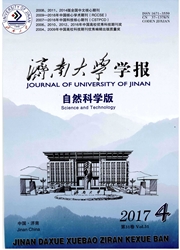

 中文摘要:
中文摘要:
The concave die design of self-pierce riveting(SPR) is of critical importance for product quality. The optimization of concave die parameters based on orthogonal test is proposed to explore the relationship between self-pierce riveted joint quality and die parameters. There are nine independent die parameter factors in orthogonal test and each factor has 4 levels. In order to evaluate the interlock and neck thickness, we carry out numerical simulations by the software DEFORM-2D. Then, the primary and secondary factors that affect the joint quality have been found out by means of range analysis. Finally, an optimization scheme is brought forward to design concave die in SPR process, which indicates that the joint has higher quality than that of former orthogonal tests.This work can be extended by a detailed mechanical and fatigue analysis for the joint quality of SPR process.
 英文摘要:
英文摘要:
The concave die design of self-pierce riveting (SPR) is of critical importance for product quality. The optimization of concave die parameters based on orthogonal test is proposed to explore the relationship between self-pierce riveted joint quality and die parameters. There are nine independent die parameter factors in orthogonal test and each factor has 4 levels. In order to evaluate the interlock and neck thickness, we carry out numerical simulations by the software DEFORM-2D. Then, the primary and secondary factors that affect the joint quality have been found out by means of range analysis. Finally, an optimization scheme is brought forward to design concave die in SPR process, which indicates that the joint has higher quality than that of former orthogonal tests. This work can be extended by a detailed mechanical and fatigue analysis for the joint quality of SPR process.
 同期刊论文项目
同期刊论文项目
 同项目期刊论文
同项目期刊论文
 期刊信息
期刊信息
